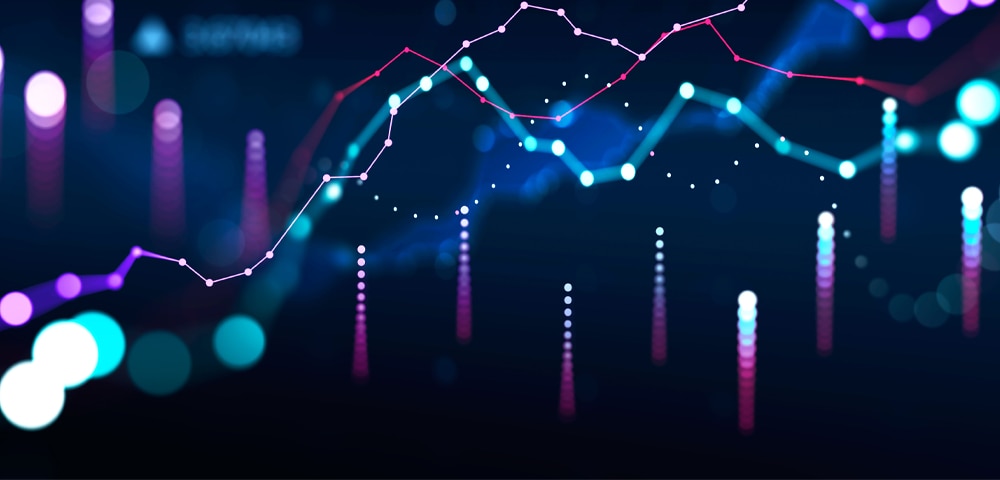Economic Outlook
EOY 2025

Economic growth is slowing — but not stopping.
Inflation, labor market shifts, and policy uncertainty are reshaping the landscape. Here's what you need to know to stay ahead.
The U.S. economy continues to navigate a complex landscape of cautious stability. Modest growth persists, fueled by resilient consumer spending and an improving trade balance, but the path forward is anything but smooth. Several headwinds — including persistent inflation, a cooling labor market, and ongoing policy uncertainty — pose significant risks. For investors and business leaders, understanding these pressure points is essential.
Overview: U.S. Economic Growth Slowing, Resilience Tested by Persistent Risks
U.S. economic growth has slowed but remains positive.
After a rebound in Q2, growth is expected to remain weak but avoid recession in the near term. Trade’s contribution is fading, and below-trend growth is likely to persist into 2026. Consumer spending is steady but losing momentum. Retail sales show headline resilience, but real gains are modest due to inflation.
After shrinking slightly in the first quarter, the U.S. economy rebounded strongly in the second quarter, according to the Bureau of Economic Analysis’ third estimate. The 3.8% growth came on the heels of a 0.6% decline in the first quarter. Imports played a large part in the swings in growth this year. Consumer spending, state and local government spending, and fixed investment grew modestly.
Consumer Caution
The underlying pace of growth has slowed and is likely to slow further, but growth has not ended, at least not yet.
Uncertainty surrounding tariffs has generated buying ahead of feared price increases, both by consumers and businesses, especially importers. This will likely weigh on growth in the final months of the year. But while consumers are still contributing to growth, they are doing so at a slower pace.
Consumers feel very pessimistic. There are many reasons for this. Inflation is inching higher, moving many goods' prices to levels above those consumers were already uncomfortable with. The federal government shutdown extended through much of the survey period, reducing services and adding to the already-high uncertainty. The labor market is weakening, with job openings scarce. There is little for consumers to like at present other than the strength of the stock market and stable gasoline prices.
However, spending among upper-income groups remains resilient, while middle- and lower-income households remain cautious, and some are showing signs of financial stress. Taken together, these indexes suggest a mixed picture of the K-shaped recovery: while financial resilience is improving slightly among high earners, uneven progress and lingering inflationary pressures continue to weigh on confidence and discretionary spending. This dynamic points to a fragile recovery rather than a broad-based rebound.
Tariffs Raising Pressure
Tariffs continue to ripple through the economy, raising costs for imported goods and certain domestic products. While some firms have temporarily shielded buyers from price hikes, sectors such as autos and electronics are already seeing upward pressure. For policymakers and businesses, this underscores a key challenge: tariff-related inflation is less responsive to interest rate cuts and will likely remain until trade terms improve. For consumers, the result is sustained higher prices in tariff-sensitive categories, shaping spending patterns well into 2026.
Understanding the true economic landscape requires a close look at U.S. tariff rates, where a significant difference often exists between the officially declared figures and the actual, effective rates applied over time. This distinction is vital for assessing the real impact of trade policies. Furthermore, the timing of these tariff figures is typically based on their announcement rather than their eventual implementation, with certain rates, such as those from June, often beginning as initial estimates. This nuanced perspective offers valuable insight into the practical application and measurement of trade barriers.
Beyond domestic tariff considerations, the global trade environment is currently characterized by a complex interplay of factors, including ongoing geopolitical tensions and efforts to diversify supply chains. Businesses are increasingly focused on building resilience, moving away from over-reliance on single regions or suppliers, a trend that is reshaping international commerce. This strategic shift aims to mitigate future disruptions and ensure more stable access to critical goods and components, reflecting a broader re-evaluation of global economic interdependencies.
Confidence Dips Amidst Economic Headwinds
Recent surveys indicate a modest decline in CEO confidence during the fourth quarter of 2025, reflecting a growing sense of caution among business leaders. The overall confidence index remains below the neutral threshold, signaling a prevailing pessimistic outlook on current business conditions. Key concerns cited by CEOs include persistent inflationary pressures, ongoing geopolitical uncertainties, and increasingly tight credit conditions. While hiring plans are mixed, there's a clear softening in investment intentions, and expectations for any significant near-term economic improvement remain subdued. This collective sentiment suggests that corporate leadership is preparing for a period of slower growth, prioritizing cost control and efficiency over expansion, and adopting a generally risk-averse stance as the economy approaches 2026.
Mirroring the caution seen among larger corporations, small business owners also experienced a decline in optimism during October, as indicated by a significant drop in their confidence index. While many proprietors still view their individual businesses as healthy, they are grappling with a confluence of challenges, including persistent inflationary pressures, dampened sales expectations, and ongoing difficulties in the labor market. The outlook for economic improvement has weakened, leading to expectations of reduced consumer demand and tighter credit conditions in the coming months. Furthermore, many small businesses report being overstocked on inventories and are less inclined to expand, even as hiring intentions show a slight upward trend. The persistent shortage of qualified labor remains a significant concern, and businesses are continuing to raise prices, partly in response to tariffs. This environment has pushed overall uncertainty among small business owners to near all-time highs, underscoring a resilient but increasingly cautious segment of the economy.
Labor Force Stagnation and the Economic Impact of Immigration Policy
The long-delayed September employment report showed a stronger-than-expected labor market. Payroll employment rose by 119,000, the strongest gain since April. The unemployment rate increased slightly to 4.4%, primarily due to an unexpected rise in labor force participation.
However, the breadth of job creation remained narrow in September. About half of the headline gain came from healthcare, with leisure/hospitality, government, and construction providing support. Transportation/warehousing posted a decline of more than 25,000 jobs, while professional/business services, manufacturing, and mining also registered losses on the month.
In more recent data, ADP revealed that 32,000 nonfarm private jobs were lost in November. Hiring was particularly weak in manufacturing, professional and business services, information, and construction. The decrease is consistent with a general softening in labor demand, with large companies accounting for an increase in payrolls, while employment at small businesses declined.
The current economic environment is also significantly shaped by a near-stalling in overall labor force growth, a stark contrast to the robust expansion led by the foreign-born labor force observed just a year prior. The ramifications of evolving immigration policies are particularly acute for sectors heavily reliant on foreign born workers, such as the construction trades, where a substantial portion of the workforce is foreign-born. A shortage of these workers is poised to exacerbate the existing housing crisis by making home building more challenging and expensive. Similarly, the agricultural and food processing industries, which depend heavily on immigrant labor, face potential difficulties in finding replacements, which has led to higher grocery prices. The transportation and distribution sectors are also expected to encounter similar labor challenges, ultimately increasing the cost of moving goods and further contributing to inflationary pressures across the economy.
Economic Outlook: Navigating Slow Growth and Policy Shifts
Looking ahead, the baseline economic forecast shows weakening real GDP growth in the near term, though a full-blown recession is expected to be averted. In recent decisioning, the Fed delivered a third consecutive 25 bps rate cut in December. Attention is now firmly on projections and guidance for 2026. Traders have become less confident that the easing cycle will extend into 2026, given still-elevated inflation and persistent divisions among policymakers, and at December’s meeting, the median FOMC participant sees just one quarter-point rate cut in 2026. A more significant rebound is not expected until 2027, and even then, the strengthening will be modest, constrained by limited federal support, a drag from trade, and slow employment growth. The jobless rate is expected to gradually tick upward as slowing labor force growth only partially offsets the deceleration in employment. Minor adjustments were also made to tariff assumptions based on recent announcements, while fiscal policy, energy prices, and the outlook for house prices and commercial real estate remained largely unchanged, reflecting robust supply in the oil market and a weaker labor market.
Visit key.com/commercial to connect with one of our experts.
For more of our insights on the U.S. economy, visit key.com/economicconditions.
